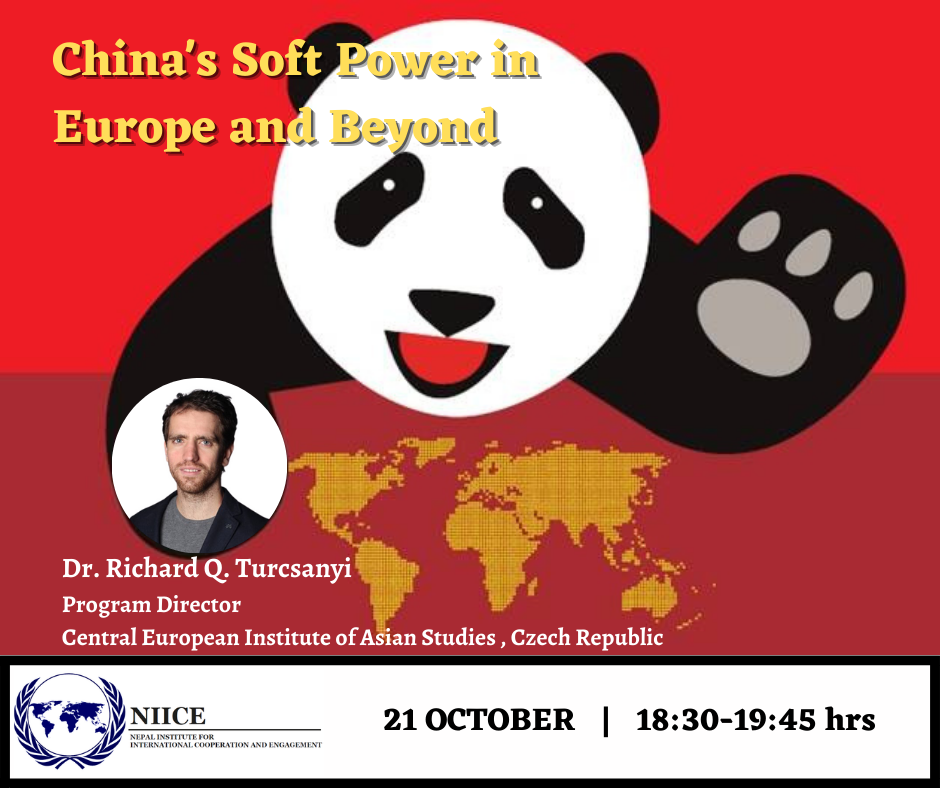
China’s Soft Power in Europe and Beyond
Watch it on NIICE Nepal YouTube Channel
Event Report
A webinar on the topic China’s Soft Power in Europe and Beyond was hosted by NIICE. The presentation was given by Dr. Richard Q. Turcsányi. The presenter showed the results of PEW Research Centre about the European perception of China, while also taking about his own research. The speaker divides the Chinese diplomacy into three eras. The first era starts from 2008 to 2012 which the speaker terms it as Chinese assertiveness. The second era is from 2013 to 2017 and the speaker calls it the Belt and Road Initiative (BRI) phase. The third era starts from 2018 till present, this era is of Chinese influence. The presenter touched upon some important questions in this presentation such as, what drives European attitudes towards China, why did the BRI discourse succeed initially and why did it become negative, what are the factors that are improving the Chinese image and what is perceived as the most positive and negative about China. The presenter also shared his analysis of three countries which were Spain, Poland and the United Kingdom. He also looked at how BRI was discussed in the media of the countries mentioned. Another aspect that was delved into was the factors that influence the European perception of China.
The presenter starts with the point that at the beginning the Chinese public diplomacy or Soft Power attempts was actually successful to an extent. Then he lists out the three eras and then lists out the drivers of European attitudes towards China. They are 1. Chinese behavior which includes Chinese foreign policy and Public Diplomacy, Chinese narratives and domestic politics especially human rights issue in Hong Kong and Xinjiang. 2. European context includes their security and economic concerns 3. Bilateral relations between European Union (EU) and China and also China and various nations of Europe and 4. Border international strategic context which includes China’s relation with Russia, with United States and border issues such as Climate Change and terrorism. The presenter makes some points very clear that is while conducting public diplomacy China acts as a monolith, Different European countries have different perceptions about China so if China takes an action, then it will be perceived differently in different countries of Europe and also that no country has full control on how it is perceived internationally.
The first era came after the Global Financial Crisis. After the crisis the Chinese started to grow more assertive especially in regards to their territorial sovereignty. The issue of South China Sea became of vital importance to them. Before the 2008 global financial crisis China was following the policy of Deng Xiaoping which was a low-profile diplomacy. The Chinese diplomacy stayed away from trouble as the expected it to help in their economic growth. The growing assertiveness of China changed the discourse about it in Europe. The assertiveness discourse influenced how China was viewed and it was not in a positive light. According to the presenter this situation created a self-fulfilling prophecy. First the discourse changed leading to the countries becoming more nervous. Then the Chinese foreign policy was continuously changing and finally it became assertive.
The second era was that of BRI. The presenter talked about how the BRI was discussed in the media of Spain, UK and Poland. The discourse was mainly driven by economy, politics, infrastructure, security and some geopolitics. The discussion around economy and infrastructure was positive and many shows were held while the discussion around geopolitics was negative but the shows were relatively marginal. One of the goals of BRI was to improve China’s soft power and this discourse helped. Till 2017 China succeeded in presenting BRI as an economic initiative, which will create opportunities mainly economic and infrastructural. The European media also followed the Chinese discourse. The presenter found that the articles which mentioned BRI was more positive towards China then the articles on China where BRI was not mentioned. In this era China managed to improve its image in Europe. An important question that the presenter answers is ‘Why did the BRI discourse succeeded initially?’. The reason for the initial success of BRI was that China acted as a monolith and went all out promoting it. The discourse was everywhere and China had a coherent narrative. It promised win-win situations and more opportunities. In Czech Republic it offered investments, in Spain it offered employment and in Poland it offered infrastructure. The second reason for the initial success was the stick discourse of mutual benefits. According to the presenter, the Europeans did not know what to make of BRI. This too helped in the success of BRI.
In 2017 the European response became clear. They started to become cautious about BRI due to its geopolitical implications. This brought the discussion into the third era or the era of the Chinese influence where the perception on China got more negative. The presenter showed us a chart of countries where in Sweden China was viewed most negatively and in Russia most positively. The presenter came to the conclusion that one of the main factors that is driving the negative perception in Europe about China is the Chinese foreign policy or the Wolf Warrior diplomacy. The second factor is the Human Rights issue especially in Hong Kong and Xinjiang. The third factor is how it is perceived on the issue of deteriorating global environment. The presenter also listed some factors that helped the Chinese image. They are the Covid-19 help provided by China to countries such as Italy, Czech Republic, Serbia and Russia. The second factor is the Chinese economic growth story and the third factor is China’s cultural attraction.
The presenter also makes an observation that is the Europeans are losing hope that in engaging China economically they will also benefit economically. He states that it is a remarkable as for 40 years the Europe-China relations was based on economy that is trade and investment. He goes on to state that the mood in Europe was shifting from emphasis on economy to engaging it with other issues such as Climate Change. Another important observation is that Chinese technology and trade is perceived most positively in Europe and Chinese impact on global environment is perceived most negatively. The presenter states that perceptions about China are not only influenced by China but also through local context. China understands it and this is why it takes a very flexible approach while exercising its soft power. In Europe China’s use of Confucius Institute or Buddhism does not dominate its soft power tool but in another region it would. The Europeans recognize that China is a global player and has to be engaged in addressing global issues.
In conclusion the presenter states that a major factor of China being perceived negatively in Europe is due to its foreign policy. The Chinese soft power approach is very flexible. Another point is that China perceives soft power differently. It put emphasis on culture but people are more attracted to its story of Economic enrichment and they see it as a source of their economic enrichment. The presenter also addresses competing narrative such as debt trap diplomacy which is also a sticky discourse. In the end what Europe wants China to do is play by global rules and norms which would mean follow international law in South China Sea and follow international agreement in Hong Kong. This will help China in projecting its soft power but the presenter is not hopeful and instead suggest it to play a leading role in combatting environmental issues.
Prepared by Shashwat Bharadwaj, Intern at NIICE, Nepal

Recent Comments